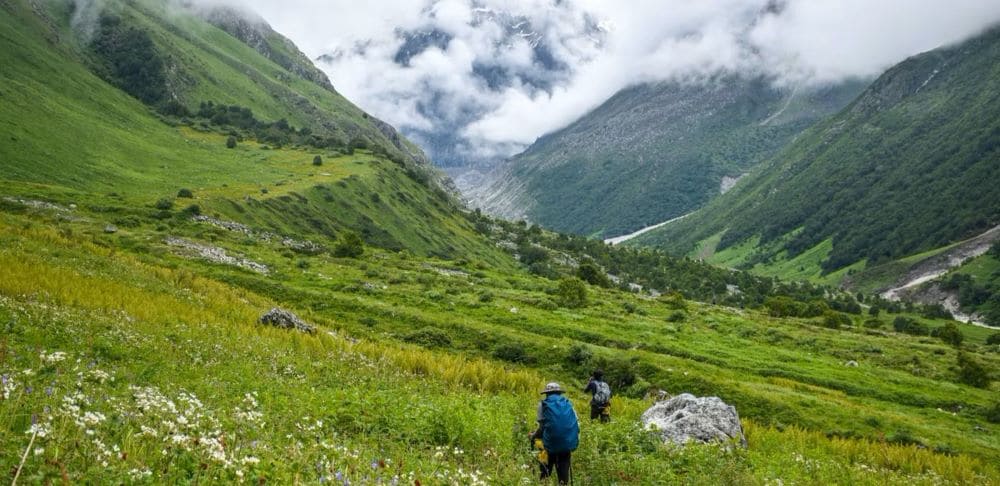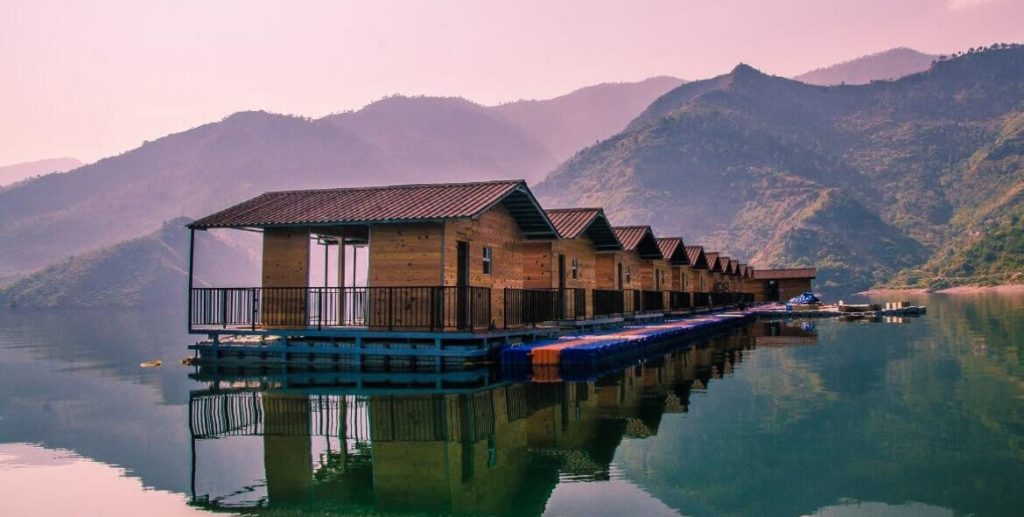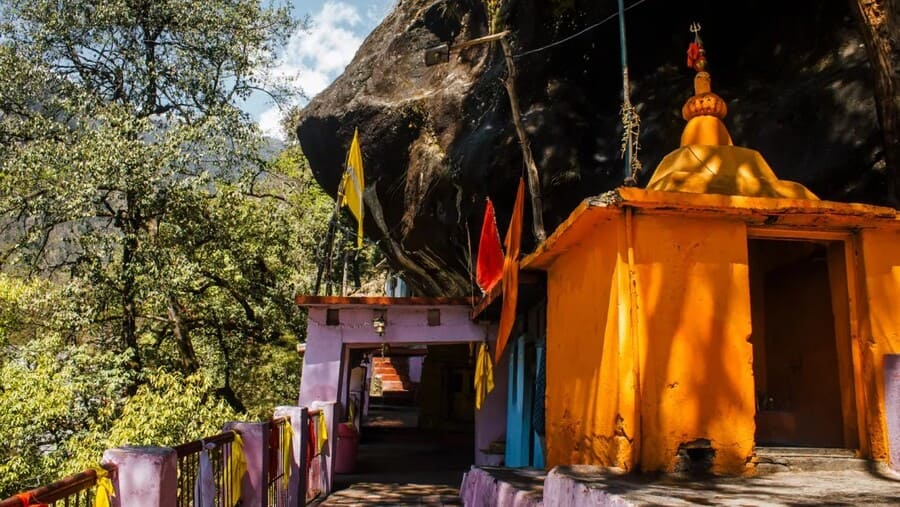Discover the best time to visit Valley of Flowers! The optimal time is from June to September. Explore vibrant blooms in a pristine Himalayan paradise.
The Valley of Flowers was declared a national park in 1982, spans an area of 87.50 sq km, and is renowned for its diverse alpine flora. Situated at an altitude of 3,658 meters (12,000 feet) above sea level, this pristine valley blooms into a riot of colours during the monsoon season, making it a haven for botanists and photographers. The valley boasts a rich biodiversity, with over 300 species of wildflowers, including rare and endangered ones.
Marvel at the sight of exotic orchids, poppies, primulas, daisies, and countless other floral treasures that paint the landscape in hues of blue, red, yellow, and pink. If you’re planning to visit Valley of Flowers the botanical wonderland, timing is key. Let’s dive into the intricacies of the best time to visit Valley of Flowers for an experience that unfolds like a blooming masterpiece.
Best time to visit Valley of Flowers:
The best time to visit Valley of Flowers is from June to September. The summer and early autumn months provide favourable weather conditions, allowing visitors to immerse themselves in the breathtaking beauty of this UNESCO World Heritage Site.
| Seasons | Months to Visit |
|---|---|
| Summer | June to July |
| Monsoon | August to September |
| Autumn | October |
The Valley of Flowers in Uttarakhand typically opens for visitors from June to October. The exact opening time may vary each year depending on weather conditions. It’s advisable to check with local authorities or official sources for the current year’s opening date before planning your visit. here are some details on the best time to visit Valley of Flowers:
- Summer Season (June-July)-
The Valley of Flowers trek is opened to the public on 1st June every year. The park remains open from June to October. The Valley undergoes a dramatic transformation with the changing seasons, each offering a unique spectacle. The best time to visit Valley of Flowers in its full glory is during the summer months, from June to July when the snow has melted, and the vibrant blooms burst forth in a riot of colour.
Late June marks the beginning of the blooming season, with a carpet of diverse floral species covering the valley floor. July and July stand out as the peak months, presenting an awe-inspiring panorama of rare and endangered flowers in full splendour. The monsoon rains, though a possibility, contribute to the valley’s charm, casting a dreamlike aura over the landscape. Visiting the Valley of during this period promises an enchanting journey through nature’s ever-changing masterpiece. - Monsoon Season (August-September) –
Embrace the monsoon magic if you visit in August or September. While rain showers are a possibility, they contribute to the vibrant colours and add an ethereal touch to the landscape. Capture the valley under the soft glow of raindrops, creating a dreamlike atmosphere that enhances the overall experience. From August to September, the Valley of Flowers undergoes a magical transformation, offering a unique and captivating experience.
As the summer season reaches its zenith, this Himalayan gem reveals a vibrant tapestry of colours, with a plethora of wildflowers in full bloom and it’s the best time to visit Valley of Flowers. Visiting the Valley of Flowers from August to September promises a captivating journey through a living canvas, where every step reveals a new facet of this botanical paradise. - Autumn Season (October)-
In October, the Valley of Flowers undergoes a graceful transition from the vibrant hues of summer to the subtle tones of autumn. As the days become cooler and the sun casts a gentle glow on the Himalayan landscape, the valley takes on a different but equally enchanting character. While the peak blooming season may have passed, October offers a unique experience for those who prefer a quieter and more serene ambience.
The remaining wildflowers, though fewer in number, still dot the meadows, creating a delicate mosaic of colours against the backdrop of majestic mountains. The changing foliage adds a touch of warmth to the scenery, turning the valley into a tranquil haven. October is an ideal time for those who seek solitude and a more contemplative connection with nature.
How to reach Valley of Flowers?
Reach Haridwar or Rishikesh:
- Your journey to the Valley of Flowers typically begins by reaching either Haridwar or Rishikesh, two well-connected towns in Uttarakhand. Both cities are accessible by road and rail from major cities in India.
Road Journey to Joshimath:
- From Haridwar or Rishikesh, proceed towards Joshimath, a town located in the Chamoli district of Uttarakhand. This journey can be covered by private vehicles, buses, or taxis. The road journey offers breathtaking views of the Himalayan landscape.
Transfer to Govindghat:
- Joshimath serves as a base for the Valley of Flowers trek. From Joshimath, you need to proceed to Govind Ghat, which is approximately 22 kilometres away. This leg of the journey can be covered by shared taxis or private vehicles.
Start the Trek from Govind Ghat:
- The trek to the Valley of Flowers officially commences from Govindghat. It is advisable to hire a registered guide for the trek, and ponies or porters can be arranged for carrying luggage. The trek from Govindghat to Ghangaria, the base camp for Valley of Flowers, is approximately 14 kilometres.
Ghangaria to Valley of Flowers:
- Ghangaria is the last human habitation on the route to the Valley of Flowers. From here, trekkers need to cover an additional 3-4 kilometres to reach the entrance of the Valley of Flowers.
Entry Permit:
- Before starting the trek, visitors need to obtain an entry permit from the Forest Department in Ghangaria. It’s essential to check the permit requirements and regulations beforehand.
- Entrance fee: The entry charge per head for Indians is Rs. 150, while the same for a foreigner is Rs. 600. Both are valid for three days.
Explore the Valley:
- Once inside the Valley of Flowers, visitors can explore the diverse alpine flora, meadows, and breathtaking landscapes. The valley is open for visitors during the summer months when the snow has melted, typically from June to September.
Important Tips:
- Plan your trip during the summer months, as the Valley of Flowers is inaccessible during winter due to heavy snowfall.
- Ensure proper acclimatization and fitness before undertaking the trek.
- Check weather conditions and trail status before starting the journey.
- Hire a registered guide for a safer and more informative trekking experience.
The Valley of Flowers Images
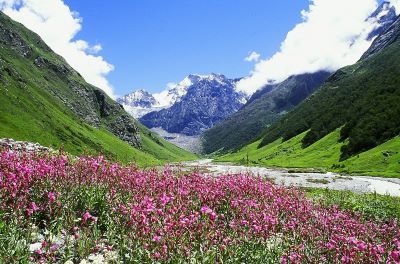
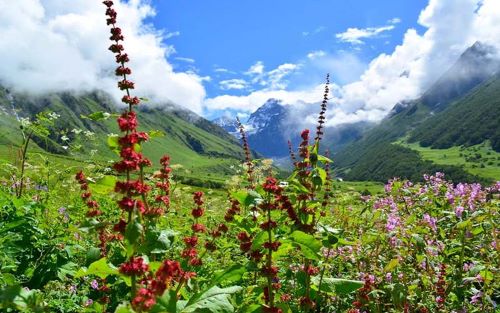

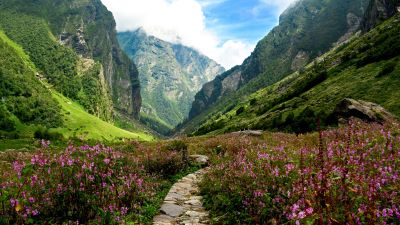
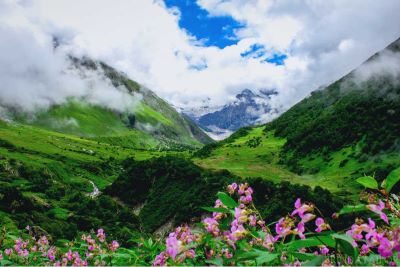
FAQs on the Best Time to Visit Valley of Flowers
Is there a particular time of day recommended for the best experience?
Early mornings and late afternoons are often considered the best times to explore the Valley of Flowers. During these hours, the soft sunlight enhances the colours of the wildflowers, and the weather is generally more comfortable. It’s also an excellent time for photography and to witness the valley in a tranquil state.
Are there any specific precautions for visitors to ensure a safe and enjoyable trip?
It’s advisable to acclimatize to the altitude before starting the trek, stay hydrated, and be mindful of weather changes. Additionally, carrying essentials like sunscreen, a first aid kit, and sturdy trekking gear will contribute to a safe and enjoyable visit to the Valley of Flowers.
How do I reach Valley of Flowers?
Access to the Valley of Flowers is through a trek that starts from Govindghat in Uttarakhand, India. The trek is approximately 17 km and involves a gradual ascent through picturesque landscapes.
Are there any restrictions or permits required to visit Valley of Flowers?
Yes, visitors need to obtain a permit to enter the Valley of Flowers National Park. Permits can be obtained from the Forest Department, and it’s important to check the current regulations before planning a visit.
Is Valley of Flowers suitable for solo travellers?
Yes, Valley of Flowers is suitable for solo travelers, but it’s advisable to take necessary precautions, especially in terms of safety and preparedness for trekking in a remote mountainous region.
Are there any specific festivals or events in the Valley of Flowers?
The Valley of Flowers region does not host any specific festivals, but the nearby areas may have local celebrations during the summer season. Visitors may enquire about any cultural events in nearby villages or towns that can add an extra layer of cultural experience to their trip.
What is the difficulty level of the Valley of Flowers trek?
The trek to Valley of Flowers is considered moderate in difficulty. It involves a gradual ascent, and the well-defined trail makes it accessible to both beginners and experienced trekkers.
Can Valley of Flowers be visited in winter?
No, Valley of Flowers is not accessible in winter. The region receives heavy snowfall, and the trekking route is usually closed during the winter months (October to April).
